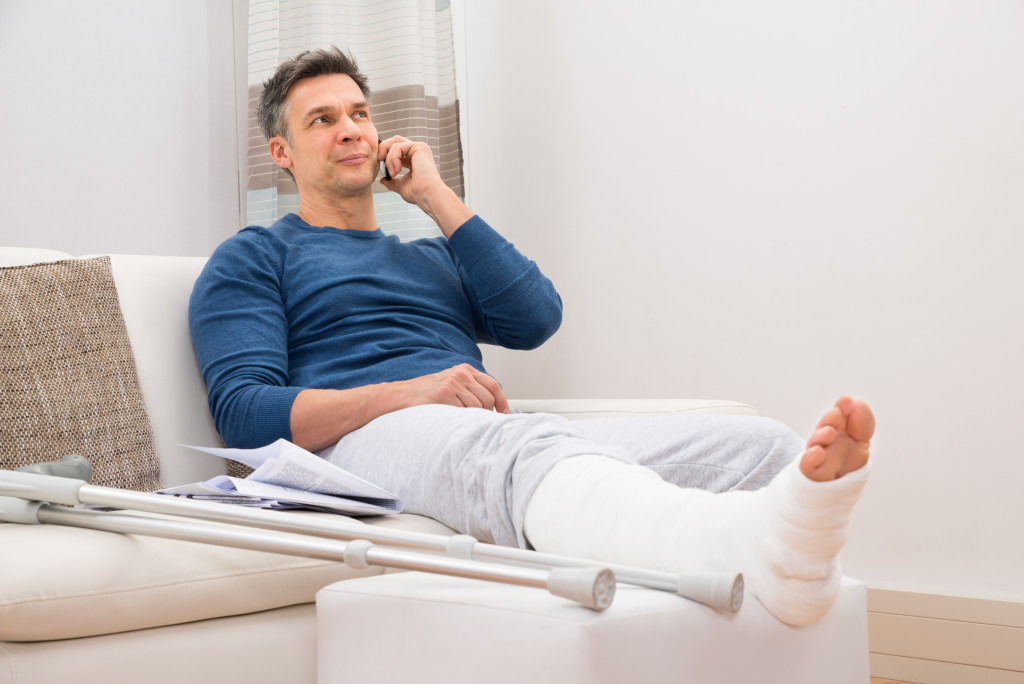- Removing obstacles and modifying pathways can significantly enhance home mobility after a major injury.
- Installing grab bars in various areas provides crucial support, ensuring safety during movement around the home.
- Stair navigation can be made easier through stairlifts, ramps, reorganizing living spaces, or strengthening exercises.
- Bathrooms can be made safer and more accessible with raised seats, benches, handheld showerheads, and nonslip surfaces.
- Kitchen modifications such as lowered countertops, accessible sinks, and special appliances enhance meal preparation independence.
Dealing with a major injury can be tough and challenging. It can take weeks or even months to regain strength and mobility. During this recovery period, the last thing you want is to struggle with the daily tasks of getting around your own home. Fortunately, there are several modifications you can make to your home to help you move around with ease and maintain your independence. This blog post will discuss some tips for setting up your home to get around easier after an injury.
Remove obstacles:
The first thing you need to do is remove any obstacles in your home that could hinder your mobility. This could be as easy as rearranging your furniture or removing any objects in your way. Ensure you have enough space to move around with crutches, a walker, or a wheelchair. You can also use tape to mark pathways to make it easier to navigate your home.
Some obstacles also include doorways too narrow for you to navigate with your mobility device. You may want to look into widening the doors or installing ramps to make accessing rooms on multiple levels of your home easier.
Plan for stairs:
Movement between floors can be challenging if your home has multiple levels. Stairs can be difficult to navigate, especially using a walker or wheelchair. Here are some ideas to make going up and down stairs easier:

Install a stairlift.
One option for making stairs easier to navigate is to install a stairlift. Stairlifts are motorized chairs that attach to the stairs and allow you to move more easily between floors.
Install ramps.
If your staircase is wide enough, you might want to consider installing a ramp. This can be a great option if you are using a wheelchair or walker, as it provides more stability and control than stairs.
Move the bedroom to the main floor.
If possible, consider moving your bedroom to the main floor of your home. This will allow you easier access and eliminate the need to use stairs. Many furniture stores offer customizable bed frames that can be easily adapted to your needs.
Strengthen your muscles.
If you must use stairs, consider strength and balance exercises to help you navigate them with ease. Working on your leg muscles and core strength can help make getting up and down the stairs easier despite your injury. Getting physical therapy can also help you increase your mobility and independence. This is especially important if you have nerve or muscle-related injuries.
Get a stair glide.
If your home has a curved staircase, you may want to look into getting a stair glide. A stair glide is an alternative to the traditional stairlift and can be installed on almost any type of stairs. It’s great for those with limited mobility as it provides easy access up and down multiple levels of your home.
Install grab bars:
Installing grab bars is essential to help you move around safely. Grab bars provide extra support and stability and can prevent falls. You can install grab bars in your bathroom, bedroom, and other living areas. Ensure the grab bars are installed securely and at the right height. If you don’t feel confident installing grab bars yourself, consider hiring a professional.

Modify your bathroom:
Your bathroom can be hazardous, especially if you have mobility issues. Consider making modifications such as installing a raised toilet seat, bathtub bench or transfer bench, and handheld showerhead. You can also add nonslip mats, apply antislip tape, or add adhesive strips to the floors.
Make your kitchen accessible:
Being able to prepare your own meals is essential for maintaining your independence. You can modify your kitchen by installing pull-out shelves, lowering your countertops to make them wheelchair accessible, and installing an accessible sink. You can also invest in special appliances such as an oven with side-swing doors or a cooktop with front-mounted controls.
Recovering from a major injury can be a challenging experience, but that doesn’t mean you have to sacrifice your independence. By modifying your home, you can move around with ease and comfort. The key is to evaluate your home and identify any areas that could be redesigned to make them more accessible. Remember, the most important thing is to keep your safety in mind and always seek professional help before making any significant changes.

